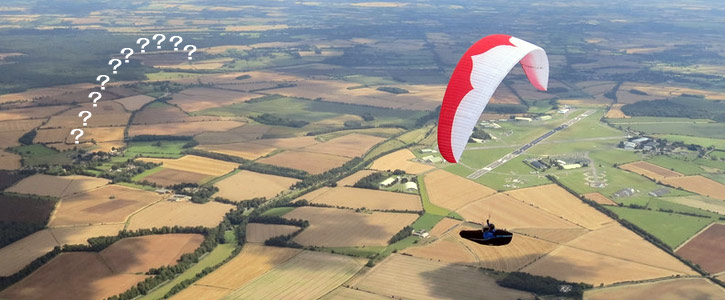The new CIVL Competition Class (CCC) paraglider specification comes into force on 1 January 2015. It will be in full effect for the coming World Championship (Colombia) in January 2015. The deadline for manufacturers to certify their CCC gliders is 3 months before the championship: October 2014, so we can expect to see these wings appearing soon. What is the new CCC specification and how will this affect paraglider design?
What is the new CCC spec?
Wings will be limited to a top Aspect Ratio of 7.9 (which is high, Niviuk Icepeak 5 was 7.9, the Gin Boomerang 9 is 7.75, R12 and Enzo2 are 7.55). Speedbar travel will be limited to 18cm (normal). No concaves permitted in the middle section (it’s a way of cheating the aspect ratio).
The tests are not significantly different from current EN D tests, except that tests are done only at max pilot weight, and the pilot is allowed to react after 3 seconds to fix the wing, instead of 5 seconds in EN D (3 seconds might be before the point at which the CCC wing ‘goes mental’, but on the other hand it means wings won't be designed to languish in a stall to reduce reaction during the wider 5s window of EN D).
Some tests are not done (low speed spin tendency, recovery from a developed spin) and many tests are allowed to be completed by the manufacturer’s test pilot and not the test centre’s pilot – but he must be observing the test (clever move, make the manufacturer’s test pilot take the risk). As no tests are required at minimum weight, manufacturers can specify a wide weight range for each size.
For practical purposes, all EN D comp wings certified before August 2014 have been included in the allowed wings (Enzo 2, Icepeak 7 Pro, Boomerang 9, Swing Core3).

Looking ahead to 2015
We expect to see a return to ‘classic’ EN D wings (like the Advance Omega) – gliders with a longer R&D phase, made for a broad range of experienced pilots, offering easier handling and good useable performance with slightly less top speed and glide-at-max-speed than the CCC wings. These will probably be three liners (A/B/C risers).
The competition wings will move to the CCC class, where cheaper certification costs and slightly easier test requirements will stimulate the development of new high performance wings, albeit with a strictly limited design (aspect ratio, risers, shape). Expect to see many 7.9 AR wings with a central rectangular box, dramatically tapered tips (possibly with concave or stepped outer sections).
They will be two liners with the A/Bs set far back and C/Ds far forward (maximum acceleration effect with that 18cm riser travel limit) and thus lots of internal reinforcing. Also possibly demanding spin recovery and increased cravatte risk (narrow tips is the only way this can go). Expect slightly more ‘potential energy’ in cascades, but wings will still be limited to EN D behaviour in the tests that matter.
And more performance? Undoubtedly, the competition is still on!
